This week’s post is guest-authored by Ronnie Georgieff, a recent graduate of the Library and Information Science program at The Catholic University of America.
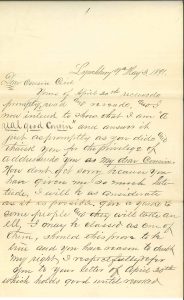
Often, we take for granted how blessed we are when it comes to the power of our technology. Communication is at our fingertips… messages to the ones we love quite literally take seconds to send and receive. Abbreviations, emoji’s, gifs are all used to express emotion and convey a message. Not to mention the numerous applications that are available for us to post and share big announcements in our lives.
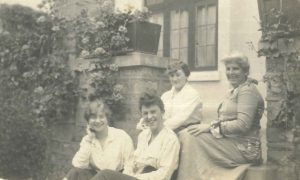
But in the late 1800s, early 1900s, Cecilia Parker Woodson, her family and friends, did not have this convenient form of contact. Rather, they wrote letters. All the letters within the collection, each handwritten in beautiful cursive, are not by Cecilia’s hand. Rather, they are from others, the majority from her husband, Walter Nelson Woodson and her daughter, Charlotte Virginia Woodson. Each letter is unique, whether it be the style of handwriting, the type of paper used, the envelopes chosen, or the stamps. Not to mention items such as pamphlets, newspaper articles that were saved regarding the Woodson family and announcements concerning them. The messages written therein are heartfelt, endearing, and contain a great deal of emotion that equally expresses love, joy as well as sorrow.
Given the task of digitizing the collection, the varying sizes of the letters and items presented me with a unique challenge. Some envelopes were very small, and other parts of the collection, such as portrait images, a notebook used to record recipes and a copy of the Ulster County Gazette could be quite large. When handling the collection, it was important to keep the fragile state of the paper in mind. Despite the excellent condition of the collection, many were quite brittle, worn and thin, and depending on the size and material, needed more care than the others.
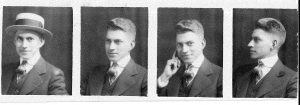
I often found myself lost in the collection and reading the handwriting therein. But there was something about the paper itself that made this collection very much ‘human’ and resonated with me. There were blotted ink stains from pens, scratch-out marks where there omitted words, wear and tear from frequent usage, cuts from scissors where stamps were removed from envelopes, fine pins were newspaper articles were attached to the page… the list goes on. These simple little touches were easily captured in exceptional detail by the archive’s high-quality scanners.
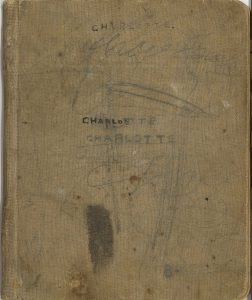
With a collection that is a little over a hundred years old, I was reminded of several things. First, we appreciate the modern ways we can quickly communicate with our loved ones. Many of the letters written to Cecilia tend to mention the excitement upon receiving Cecilia’s letter or the anticipation of it being sent or received. Secondly, in a world filled with emoji’s and abbreviated texts, meaningful handwritten letters seem like a lost art. Thirdly, I am grateful that technology has advanced in such a way that we are able to permanently family stories and memories, such as these, for future generations.
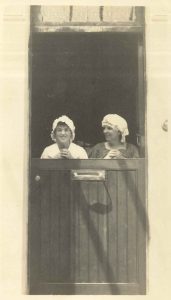
Take some time today to message a loved one… try something new- write a handwritten letter to a friend… and I highly encourage you to explore and read the digitized collection. It will captivate you and touch your heart just as it touched mine. In a world filled with technology, you will gain a better appreciation for what has passed, what is present, and what will be.
You can view the Cecilia Parker Woodson Collection Finding Aid here.
The Cecilia Parker Woodson Digitized Collection will be available online soon.
Interested in reading more? Look at Maria Mazzenga’s Archivist Nook blog posts “Friends I’ll Never Meet” and “D.C. History at the Archives.”
Can get enough? Check out our Instagram page: @catholicu_archives where you can find a recipe for ‘Sunshine Cake’ (posted July 30th)
